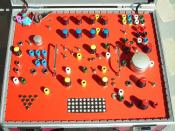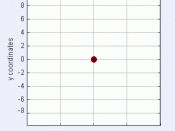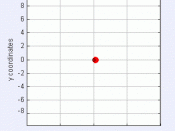Physics influences our lives and society in many ways. This assignment is being conducted to further develop the knowledge and understanding of photons and the physics involved in ultrasounds. It will also discuss what an ultrasound is, the medical and general uses of ultrasounds, benefits and risks and also limitations of ultrasounds.
Ultrasound or ultrasonography is a medical imaging technique that uses high frequency sound waves and their echoes. The technique is similar to the echolocation used by bats, whales and dolphins, as well as SONAR used by submarines. In ultrasound, the following events happen: The ultrasound machine transmits high-frequency (1 to 5 megahertz) sound pulses into your body using a probe. The sound waves travel into your body and hit a boundary between tissues (e.g. between fluid and soft tissue, soft tissue and bone). Some of the sound waves get reflected back to the probe, while some travel on further until they reach another boundary and get reflected.
The reflected waves are picked up by the probe and transmitted to the machine. The machine calculates the distance from the probe to the tissue or organ (boundaries) using the speed of sound in tissue (5,005 ft/s or1,540 m/s) and the time of the each echo's return (approximately one millionths of a second). The machine displays the distances and intensities of the echoes on the screen, forming a two dimensional image like the one shown below.
Doppler ultrasound measures the blood flow in veins etc, done by the change in frequency.
In a typical ultrasound, millions of pulses and echoes are sent and received each second.
where:distance in which the wave has travelledthe speed of the sound wave in tissue, bone or fluidtime it takes for the wave to reflect back to the probeThe probe can be moved along the surface...


